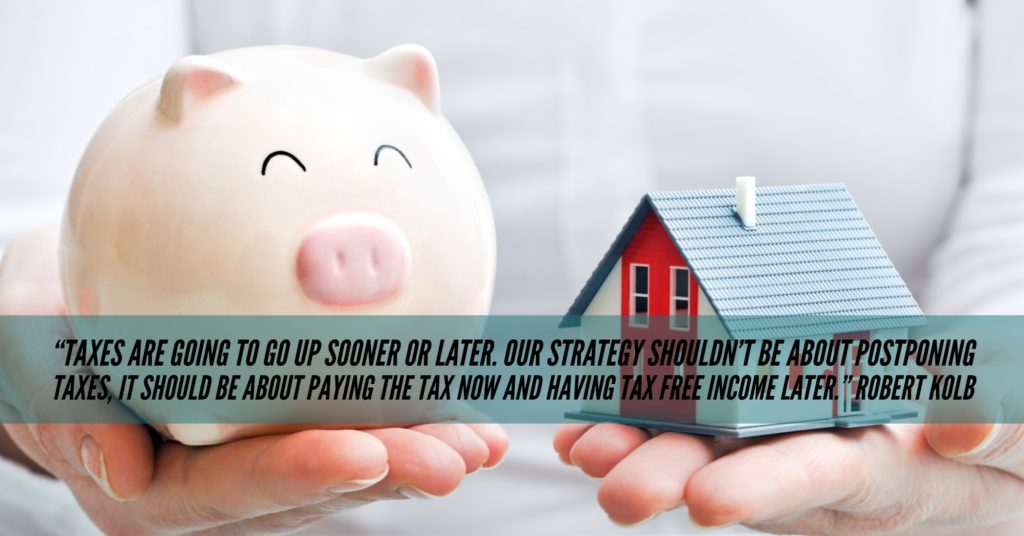
Off Wall Street Investing with the Red-Blue-Green Strategy
Is your investing portfolio diversified?
Or is all of your money in the stock market?
If you are the latter, learning the red-blue-green strategy is crucial. When you are putting your portfolio together, we want to make sure it is diversified between red, blue and green money. We want all 3 of these colors, but contrary to popular belief, we want the least amount in red.
1. Red Money
Most people are all in red money, such as Wall Street and 401(k)s. The problem with red money is that it’s not only bad for taxes, it’s volatile. The stock market for example is one of the few investments that can be dramatically affected by just a rumor.
And the way most people are using 401(k)s are to put off paying taxes, but paying taxes now is a much better strategy, while you have a lower rate—taxes will bounce up as time goes on.
2. Blue Money
Blue money is alternative investing. Usually, these investments have no correlation to what’s going on in the stock market. Examples of blue investments are oil, gas, gold, crypto, and other alternative investments. Blue money is all about finding niches with decent returns that can mitigate loss and risk along the way.
The average person hasn’t received quality finical education, so talking about blue investments often precipitate a lot of common objections. What’s most important is understanding the risks and the liquidity, how long the money will be tied up, and how you will make money. Everyone wants to feel comfortable with their investments, so having an overall understanding of how the investment works is important. Once you understand it, you’ll be thinking, “Why aren’t more people doing this?!”. Most people haven’t been introduced to this knowledge! We’ve been told to do all the wrong things—but you’re not going to create much wealth by putting money away into an IRA and mutual funds.
3. Green Money
The last color is green—green money typically includes investments with some sort of contract with guarantees. Typically, insurance companies, and these companies have to put so much money into their reserves. With insurance companies, you can make a decent rate of return with protection against loss, such as 7-10%. And this often comes with tremendous tax advantages.
Most people are at 90% red money—but you need a portfolio much more diversified than that. Where you want to be is maybe 10% or 20% red money, and the rest in blue and green, based on your risk tolerance, where you want to put your money and how your money rules come into play.
In order to create a unique strategy that works for you, you should take into consideration your strengths and weaknesses, and how you can turn them into opportunities. Request a free, guided Gap Analysis session from our team of experts to understand your current situation and how to create a red-blue-green strategy to diversify your portfolio and get you the highest return possible.
Not only do we want to make money and higher returns, we want to keep and protect our money, and pay less in taxes. And that, at the end of the day, is your ultimate goal—and what our strategies are all about.

3 Things I Want You to Do Today:
(If you want more investing strategies and multi-million-dollar business advice)
Step 1: Search for 'Real Money Talks' in your preferred podcast app
Step 2: Click on my face
Step 3: Hit the 'Subscribe' button
P.S. Every Tuesday at 12pm PST I host a Facebook Live on the Live Out Loud Facebook Page, talking about investments, tax strategies, cash flow, giving away free tools and gifts, and answering your burning questions. You don't want to miss it!
Share The Knowledge!
Which color is most of your money in? Comment below, or head over to AskLoral.com to ask Loral a question!
'LIKE' US ON FACEBOOK
TWEET US
OUR WORLD IN PHOTOS
LET'S LINK UP
CONNECT ON GOOGLE+
#ASKLORAL
Want free business coaching from one of the world's leading wealth and entrepreneurial minds? Join us at our upcoming #AskLoral LIVE webinar!
Copyright 2016 - Live Out Loud & Loral Langemeier - All Rights Reserved
ABOUT | WEALTH TRAINING | SUCCESS STORIES | COMMUNITY | BLOG


